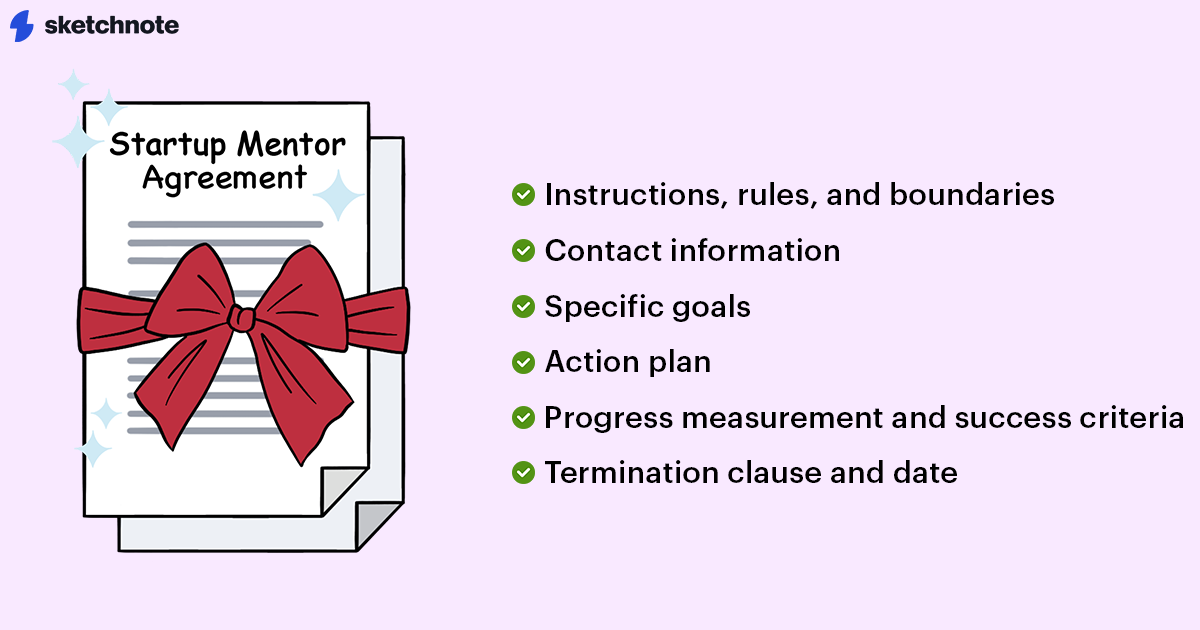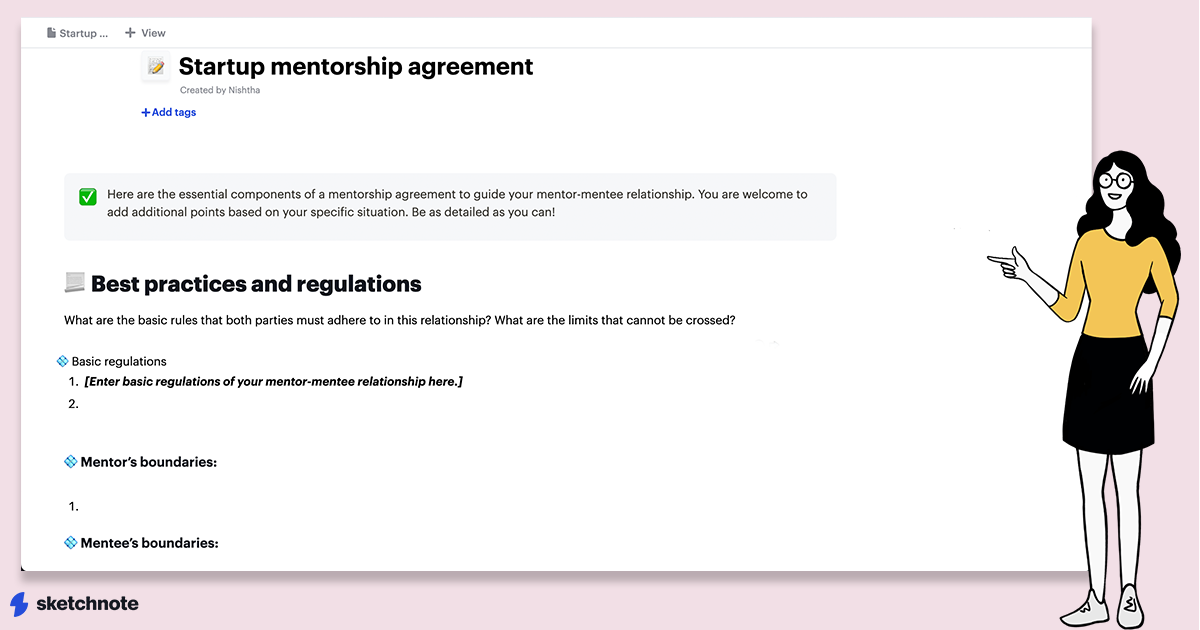In a startup, it's not uncommon to find many roles that work together deeply to accomplish one common mission: Develop and achieve the project’s goals, together.
From the founders who created the business to the members of the team who make it work, and the investors who believed in the idea and helped with funding—a startup is able to grow thanks to the contributions of many actors.
However, there’s one actor who also has a significant impact on the success of a startup, with a role that can sometimes be easily overlooked. We're talking about the mentor!
The figure of the mentor is very well established in the startup ecosystem since it plays a key role in guiding the entrepreneur. Mentors do this by offering support and advice, all based on their knowledge of many years of experience.
To understand more about the benefits a mentor brings to an entrepreneur, and thereby to the startup the latter runs, check out our blog post on the importance of a mentor-mentee relationship.
What is a mentor agreement?
Quite like any professional relationship, the one between a mentor and a mentee should ideally also be ratified with a binding, legal document. This is called a mentor agreement, and beyond its legal ramifications, it can help this delicate but important relationship reach peak efficacy.
This agreement is usually in form of a document. In this, both parties establish their commitments to each other as well as the limits of their relationship, such as the time in which they are going to be working together.
Although this is not a mandatory document, it is highly recommended by industry veterans. The agreement is specified in most cases since it helps to keep a record of the expectations of both mentor and mentee. A document in black and white can help avoid misunderstandings, while making communications more efficient, at the same time.
What is the importance of making a mentoring agreement?
Now that we understand that the main purpose of a mentorship is to help the entrepreneur grow a successful startup, we can also understand that the importance of a mentor lies mainly in their experience.
When running a new business, the lack of experience can be a make-or-break situation for an entrepreneur. The inability to gauge certain situations beforehand and make decisions can be the main impediment to adequate progress. It can often lead to them making totally avoidable mistakes.
But things become a lot easier with a mentor around. With the guidance of a mentor, entrepreneurs receive the right sort of direction thanks to their immense experience. It makes up for the lack of wisdom the founder may be missing. Being directed by a person who has already been through it all can help them navigate problems and resolve them.
There are—unfortunately—no instruction manuals handed out when one's setting out to create a successful business. No amount of Google searches can tell them, for certain, what the correct step to take is, and what the best moment to take it could be.
However, by joining a mentoring program, entrepreneurs can acquire this guidance and knowledge through the mentors' experiences. They can also access the possibility of growing their contacts inside their specific industry, thanks to the mentor's connections. This, in turn, opens a lot of doors for the startup founder too!

What should you include in a mentoring agreement?
Although mentoring agreements are open to variations depending on the requirements of both parties, the type of startup, the industry they are operating in, and other parameters, there are a few important pointers that should always be included in the document. Here's a lowdown on what to include:
Base instructions, rules, and boundaries
In this section, you should include the bases of your agreement. Make sure to flesh out the existing limits and the rules that have to be followed by both parties, especially.
Here's where you can also add the boundaries and liability limits that both parties are subjected to, as well as the confidentiality limits you consider necessary. However, remember that it’s also acceptable to add them as a separate point if there’s a lot of information to be specified.
Roles and responsibilities of both parties
In this section, you will identify a person who will be in charge of the progress of your goals and their evolution.
Goals must have someone specifically responsible for them. If not, you risk falling into awkward situations such as confusion over who was going to perform certain duties. It leads to inefficiency, which is the enemy of progress.
Contact information, and preferred way of communication
This point aims to establish a clear procedure for contacting the other party.
It includes information on all actors involved in the agreement, the expected frequency of communication, the preferred way of contact, and other related points regarding the meetings.
With this, you aim to avoid under or over-contacting the other party and maintain the primary objective of reaching maximum efficiency.
Specific goals
This point is where you set up specific goals you want to achieve for which you've joined this business partnership.
Always remember to be as specific as possible. The more specific you are, the easier it will be to measure and analyze the progress and results of your actions.
Some acceptable goals would be—for example—developing leadership skills, growing your network, or growing your team with ten new hires.
Mentoring action plan
Here's where you will establish the steps you plan to take in order to achieve each of your goals.
These steps have to be challenging but achievable. They need to be enough to encourage both parties to put in the effort necessary to progress but not so much that it will seem impossible and, therefore, discouraging.
Progress measurements and success criteria
Next, you should establish specific measurements to control the advancement toward your goals.
It's preferred that you use quantitative indicators of progress since they show a more accurate idea of a point you are at in the overall picture.
Having specified success criteria is particularly necessary if your goals are not quantitative or are very broad termed.
For example, the goal of improving leadership skills. Since the verb “improve” is not an absolute term and can mean different things for different people and situations, it’s necessary to establish which indicator will be taken as proof of accomplishing this goal.
Termination clauses and date
It’s also essential to set the reasons why the agreement can be terminated and if there would be any repercussions because of it.
We recommend establishing a termination date in which the relationship is expected to finalize, in order to set better limits and expectations.
This does not mean that the agreement can’t be renewed. However, it will help fix deadlines for completing the goals. Later, both parties can create a new mentoring agreement with new goals.
It’s necessary to specify under which conditions the agreement can be finished, and what consequences will come from it.
No one knows how relationships are going to evolve, and there’s always the chance of things going south. Make sure to specify under what circumstances the parties can break their agreement, and what the consequences of those actions will be.
Real-life examples of startups’ mentor agreements
A report published in the Human Resource Development Quarterly journal showed that 70% of Fortune 500 companies relied on mentoring strategies. Even more recent studies have shown that this rate has already reached 84%!
Several successful companies have been influenced and guided by a mentor at some point in their journeys. Here are some examples of what real-life startup mentoring agreements look like. You can use them as references when creating your own!
The Founder Institute
A pre-seed accelerator founded in 2009, The Founder Institute has helped launch over 6,000 companies across six continents. The Founder Institute mentor agreement goes into a very detailed description of several basic points we mentioned above.
For example, the agreement has the “Obligations of Mentor” section, which specifies all the different requirements the mentors who participate in their program are subject to.
The agreement also specifies key points such as the Terms of Confidentiality, as well as the Termination Effects.
Interestingly, the accelerator adds one last point named Miscellaneous to the agreement, where they detail some additional points that are also relevant to this specific program and the startups and mentors who adhere to it.
Consider adding a subsection similar to this one if there are additional conditions you think could be necessary for your agreement.
East Hants & Districts Chamber of Commerce
This is a non-profit organization focused on helping businesses connect and grow. As part of their services, they offer mentorship programs to the companies they support.
The East Hants & Districts Chamber of Commerce mentor agreement is well-structured and specific. The document has been divided into six broad subsections, each detailing several points.
The agreement covers the following central topics:
- Role of Mentor
- Main Principles of the Agreement
- Role of Mentee
- Confidentiality
- Terms and Limits of the Agreement
- Contact Information and Signatures
Virgin Startup
Virgin Startup is a non-profit that also focuses its efforts on helping entrepreneurs grow and achieve their goals.
They offer mentorship opportunities as part of their resources, and have made the Virgin Startup mentor agreement available on their website.
Their document is also structured in bulleted points, with more detailed specifications inside each topic. Each point covered is well explained, which leaves little to no room for misunderstandings among any of the actors involved.
The most notable characteristic of this agreement is how well-defined the Mentor’s Services and Mentee’s Requirements are. Each point is clearly explained and defined, so there are no doubts about where their responsibilities start and end.
Create your own with this template

Now, it's time to work on your own Startup Mentorship Agreement. You can consider the points mentioned above and chart your own requirements from both mentor and mentee.
You can also check out Sketchnote's Startup Mentorship Agreement template and simply fill out pointers requiring elaboration. With the template, you can generate your own agreement within minutes and get to work with your mentor or mentee quickly. Good luck!



